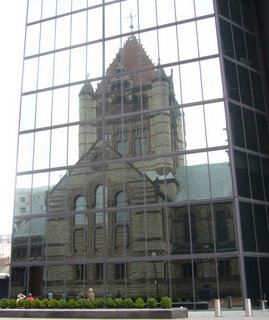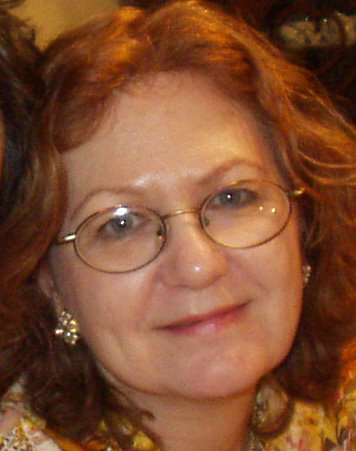Beautiful Modern Building
 I couldn't leave Boston on Friday without stopping by Trinity Church. Hard to resist; you can't get to the T station from Copley Place without going right past it. I have a particular interest in Trinity Church these days, because it was designed by Henry Hobson Richardson. Richardson also designed the church next door to me, whose spire I can see through one of my skylights as I type this.
I couldn't leave Boston on Friday without stopping by Trinity Church. Hard to resist; you can't get to the T station from Copley Place without going right past it. I have a particular interest in Trinity Church these days, because it was designed by Henry Hobson Richardson. Richardson also designed the church next door to me, whose spire I can see through one of my skylights as I type this.Springfield's North Congregational (now the Hispanic Baptist Church) was completed in 1873; Boston's Trinity Church, four years later. Richardson's very first commission, in fact, was in Springfield, just two blocks from my house: the Church of the Unity (completed in 1869; demolished in the '60's by--who else?--Mr. Demolition himself, current Mayor Charles V. Ryan).
Across the street from Trinity Church is I. M. Pei's Hancock Tower, a shaft of bluish glass which reflects mostly sky and so seems to disappear into the landscape. Leaving aside the engineering problems (for years, glass panels were popping out and endangering pedestrians; excavation for the foundation damaged the church and other nearby structures; and until the building was stabilized, it swayed so badly in the wind that tenants got seasick), it's an architectural masterpiece. And it only took about a hundred million dollars--more than the original cost of the building--to fix all the issues.
What I like most about the Tower is that it reflects the Church so beautifully, rather than just blotting it out. When you stand on St. James Avenue, between the two buildings, you see Trinity Church whichever way you look. That's the way new buildings are supposed to work with old.

